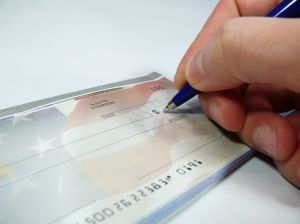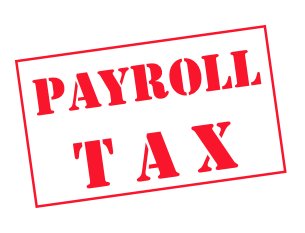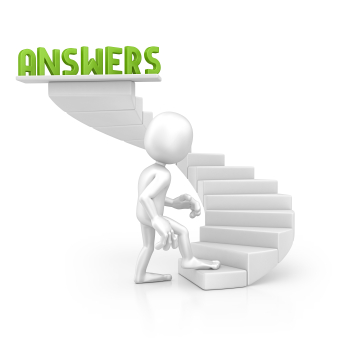- Essential Bookkeeping Habits For Audit Ready Books in Canada
- Payroll Manual
- How to pay employees with cash
How To Pay Employees with Cash
Applies To Contract Of Service Relationships | Employer - Employee Status
By L.Kenway BComm CPB Retired
This is the year you get all your ducks in a row! Start by starting.
Edited September 19, 2024 | Updated February 3, 2024 | Originally Published on Bookkeeping-Essentials.com in 2011
WHAT'S IN THIS ARTICLE
Introduction | Protect Your Business | Instructions | Why Audit Proof Cash Payments | FAQ Casual Labour
NEXT IN SERIES >> Payroll Deadlines
I'll show you how to pay employees with cash to protect your business while accommodating the employee. These 5 easy steps should reduce your audit risk.
Use this process to pay temporary or casual labor employees in cash. Don't cheat them out of their CPP and EI earnings eligibility.
Protect Your Business
Here's why you want to use this method if you pay some or all your employees with cash.
- There must be a paper trail to prove payment.
- A pay stub detailing how the pay cheque was calculated should still be issued.
- There must be evidence that the employee received their pay for the period.
Why is this necessary? It protects your business in the event of an employee dispute or a payroll audit.
Paying employees with cash involves creating a clearing account to help you balance your payroll run. After running the "cash" payroll cheques through a QuickBooks bank account type called "Payroll - Cash", the account balance should be zero after each payroll disbursement. Here's how it would work.
 The right way to pay employees with cash
The right way to pay employees with cash
Step-by-Step Instructions | How to Pay Employees With Cash
 The right way to pay employees with cash
The right way to pay employees with cashAs you are reading, please make sure you click on the + if a "step" is collapsed to see the full set of instructions.
Step One - Separate payroll run
Do a separate payroll run for cash. Enter your payroll data as usual applying the proper payroll tax rates. This will also create pay stubs for each employee. Print out your summary payroll report.
Step Two - Issue "cheques" in your accounting software.
In your accounting software package, release the pay "cheques" issued in the employee's name. The memo field could mention that it was paid in cash. Each "cheque" would be coded to the Payroll-Cash account. Print out the pay stub for cash payment for each employee.
Step Three - Take the money from your bank account correctly.
On or about payday, write a cheque from your regular bank account issued in your name for the exact amount of the cash payroll run (calculated in step one), ensuring the memo area of the cheque is completed and stating the payroll period. The cheque would be coded to the Payroll-Cash account. Attach the payroll report as backup.

Check Point on Clearing Account Balance
The payroll "cheques" offset the cash withdrawal from your bank. Your clearing account should now be zero if you did everything correctly.
Don't forget, employees paid in cash are assessed payroll withholdings the same as employees paid by cheque or direct deposit.
Step Four - Prepare pay envelope
Prepare a pay envelope that contains each employee's cash payment AND their pay stub (which you prepared in step two).
It's important for both you and the employee to issue a pay stub for any cash payments related to labour.
Step Five - Have employees sign for pay
When you give the employee their pay envelope, have them sign for the pay either in a log (like at the post office when you pickup a registered letter/parcel) or on your copy of the pay stub. Have the employee open the envelope in front of you and count his/her pay.

Check Point on Payroll Tax Rates
Did you withhold source deductions from the amount you paid your employee with cash?
You would include and pay your payroll taxes on these cash payments with your normal payroll source deduction remittance on form PD7A.
Why Audit Proof Your Cash Payments to Employees?
Following these 5 easy steps should ensure you pass a CRA payroll audit on hiring temporary or casual labor and paying these employees in cash.
It also protects your business in the event of an employee dispute.
 From a tax compliance point of view, there is no such thing as casual employment in Canada.
From a tax compliance point of view, there is no such thing as casual employment in Canada.FAQ About Casual Employment
Following are some questions asked about casual employment in Canada.
- How does CRA define casual labour in Canada?
- I hire casual labor. How do I deal with casual employees from a tax point of view?
- Can you give me some examples of casual employment.
How does CRA define casual labour in Canada?
How does CRA define casual labour in Canada?
In general, CRA no longer acknowledges any labour in Canada as casual. When you hire someone nowadays, you must classify them as an employee or self-employed. Either way, you need to collect some basic information BEFORE they begin working for you.
If you are entering into a contract of services relationship, have them complete a TD1 form before they begin working.
If you are entering into a contract for service relationship, capture their legal business name, SIN or BN, and address. Put a copy of their business license on your file. Only pay on presentation of an invoice.
CRA does define employment as casual if it meets these two conditions:
- it must be casual; and
- it must be for a purpose other than the employer's trade or business.
If the casual employment meets BOTH of the conditions, then the earnings are NOT pensionable or insurable.
In summary, CRA no longer accepts casual labour as a category when doing payroll except if it relates to "a purpose OTHER than your usual trade or business".
I hire casual labor. How do I deal with casual employees from a tax point of view?
I hire casual labor. How do I deal with casual employees from a tax point of view?
From a tax compliance point of view, there is no such thing as casual employment. All hires must be classified as employees or subcontractors. CRA frowns upon casual employment because it supports the underground economy which undermines our tax system.
For employment to be deemed casual, it must be:
- unreliable,
- occasional,
- unpredictable.
If employment is stable and expected to continue (i.e., set hours and work pattern), it will not be considered casual in CRA's eyes. If the work is related to the business earning income either directly or indirectly, the employee earnings are pensionable and insurable.
EI premiums are collected on everyone's first dollar earned. There are no age or hours worked exemptions. CPP contributions must be made by all workers between the ages of 18 and 70. The first $3500 in earnings is exempt.
AUDIT READY
The easiest method is to hire a person who is comfortable working only when you need them. Have the casual employee file out a TD1 form and pay them as employee. You can use the cash payment system above to protect your business and make the payment tax deductible; or you can direct deposit their occasional earnings.
AUDIT RISK
If you still want to hire casual employees for random, small tasks and chores, but don't want to deal with payroll administration for one-off employees, you can. You just won't be able to write-it off as a business expense. When you pay the employee with cash, it will come from your own pocket, not the business's. This is extremely important to note if your business is incorporated. You cannot withdraw cash from your corporation for personal use without some kind of consequence.
It's important to understand though, to pay employees with cash without withholding source deductions is no longer an acceptable practice. You are not on the right side of the law. You are underreporting payroll taxes, skirting worker compensation laws, and cheating the employee of government benefits. If caught, there will be significant consequences.
Can you give me some examples of casual employment.
Can you give me some examples of casual employment.
When you hire a caregiver, nanny, babysitter, maid, handyman for window cleaning, painting, or lawn mowing and snow removal (not for your trade or business) in a regular and continuous employment, then you have to deduct CPP, EI, and tax. It is does not meets CRA's standard of casual employment. Whether you pay employees with cash is not relevant.
However, if for example you hire a babysitter (not for your trade or business) and that work is not regular (casual), then you do NOT deduct CPP or EI, as this work IS casual. And because it IS casual, and not for your trade or business, then this employment is an exception for CPP and EI purposes.
Keep in mind that if you hired any of the above services through a business and pay the business upon presentation of an invoice, then you are not in an employee-employer relationship so you don't have to be worried about payroll and the appropriate source deductions.
References:
The information presented is based on an article written by U.S. ezine author Jennifer Thieme Johnson on her now defunct site JenniferThieme.com (2007 - 2018). The site content was about how to Get More from QuickBooks. I handled the payroll run a bit differently than Jennifer's U.S. article suggested. I tweaked her process for Canada.
Back to top








